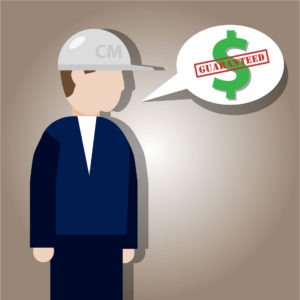Project Delivery Methods
There are three basic contract delivery methods used by Owners in the construction of commercial buildings. Each contract type has its pros and cons and should be reviewed and evaluated before beginning the construction process.
Design-Bid-Build
This contract method is considered the traditional approach in commercial construction. In this method, the Architect is responsible for all administrative paperwork on behalf of the Owner. Like the name suggests, there are three stages to this delivery method:
![]()
Stage 1: The Owner contracts directly with the Architect to design a complete facility (including all construction and engineering specifications).
![]() Stage 2: Once the design is complete, the Owner issues the drawings for competitive bidding through the Architect.
Stage 2: Once the design is complete, the Owner issues the drawings for competitive bidding through the Architect.
![]()
Stage 3: The Owner then executes a construction contract with the chosen General Contractor under a fixed price based on the Architect’s bid documents.
Owner’s Advantages
- The design team becomes an advocate for the Owner protecting their interests.
- The Owner can be very involved in the design process, but ultimately has control over how much involvement they have.
- Design and construction roles are separate and well understood, making both responsibility and liability relatively clear.
- Ensures fairness to potential bidders and improves Owner decision making by providing a range of potential options.
Owner’s Disadvantages
- The Owner does not have the benefit of Contractor input during design, leaving them exposed to cost increases errors and omissions in the bid documents and perhaps increasing the number change orders during the construction process.
- The Contractor, because they had to competitively bid the project, might work to increase their profit margin through the change order process and the Architect and Owner will work to keep that effort to a minimum. As a result, tension, conflict, workmanship and schedule problems could potentially occur.
- The Owner could pay more if the Architect spends more manhours to complete a bid set of documents or to revise the document to bring back into budget.
- Any savings generated by the Contractor during the buy-out phase will accrue to the benefit of the Contractor.
- The Owner will only receive one monthly invoice from the Contractor for the Owner’s contract amount completed each month.
Design-Build
With the design-build contract method, the Owner has one entity, the Contractor, who controls both the design and construction of the project on behalf of the Owner. The selection process can be more challenging for the Owner and is usually based on the Contractor’s qualifications, prior work experience, or an existing relationship.
With the design-build method, the Contractor will contract directly for the architecture and engineering design. The design professionals will now work on behalf the design-build Contractor who is responsible for all design and construction. The Owner will administer the contract, review the payment applications and depend on the professionalism and reputation of the Contractor for quality and workmanship. Often, the Owner will hire an “Owner’s Representative” to monitor the work of the Contractor and administer the contract.
Owner’s Advantages
- The Owner is able to obtain an early price for the project.
- Lower initial cost than under the traditional design-bid-build process.
- Sorter project duration.
- Single point of contact for the Owner.
- The Owner is actively involved, allowing for greater control.
Owner’s Disadvantages
- The Owner does not have the “check and balance” as experienced in the traditional design-bid-build method between the Architect and Contractor.
- Unless the project is a cost plus with a negotiated fee, the Owner can receive limited detail in the actual cost of construction.
- The Owner must depend heavily on the reputation of, and their relationship with, the Contractor to be assured that the quality of materials selected and the workmanship are maintained.
- The Owner could be required to be actively involved in the process to scope work, set design standards, finishes, and materials if the Owner does not have trust in the Contractor.
CM/GC with a GMP (CMR)
This contract method is called Construction Management/General Contraction at Risk with a Guaranteed Maximum Price (CMR). It achieves the benefits of both the traditional Design-Bid-Build and the Design-Build method of contract delivery.
 Stage 1: The Owner selects and contracts with an Architect as in the traditional approach, but the scope of work done by the Architect is reduced.
Stage 1: The Owner selects and contracts with an Architect as in the traditional approach, but the scope of work done by the Architect is reduced.
 Stage 2: The CM/GC is selected on a negotiated/competitive fee basis, which allows the selection process to occur very early on. Often the CM/GC is on the team and will assist the Owner in selecting the Architect.
Stage 2: The CM/GC is selected on a negotiated/competitive fee basis, which allows the selection process to occur very early on. Often the CM/GC is on the team and will assist the Owner in selecting the Architect.
 Stage 3: The team completes the design. All direct costs, direct material vendors and subcontractors are competitively priced and presented to the Owner in an “open book presentation”.
Stage 3: The team completes the design. All direct costs, direct material vendors and subcontractors are competitively priced and presented to the Owner in an “open book presentation”.
 Stage 4: The CM/GC prepares a fixed price guaranteed maximum price (GMP).
Stage 4: The CM/GC prepares a fixed price guaranteed maximum price (GMP).
 Stage 5: The Owner receives a detailed breakdown of the GMP and a thorough accounting of all monthly invoices. If the actual cost exceeds the final GMP, the CM/GC will be responsible for the additional cost.
Stage 5: The Owner receives a detailed breakdown of the GMP and a thorough accounting of all monthly invoices. If the actual cost exceeds the final GMP, the CM/GC will be responsible for the additional cost.
 Stage 6: Construction proceeds similar to the traditional approach with the Architect acting as the Owner’s advocate providing the “check and balance” in terms of material, quality and workmanship.
Stage 6: Construction proceeds similar to the traditional approach with the Architect acting as the Owner’s advocate providing the “check and balance” in terms of material, quality and workmanship.
Owner’s Advantages
- The Owner has the option to have as much or as little involvement in the design and construction process.
- The Owner has better control over project costs.
- Monetary risks are diminished by a CM/GC as long as the contract is clear.
- The CM/GC takes on the brunt of management responsibility for the Owner.
Owner’s Disadvantages
- A premium is placed on the proper selection of the CM/GC, based on the CM/GC’s particular skills and experience to provide the best value to the owner.
- While the CM/GC provides the Owner with professional advisory management assistance during design, this same assistance is not present during the construction phase as the CM/GC is in an “at-risk” position during construction.
- CM/GC design input does not necessarily translate into better design quality.
